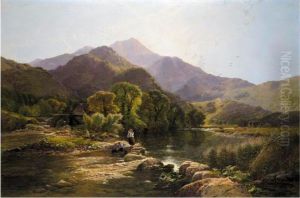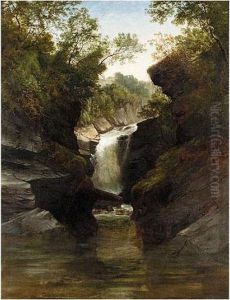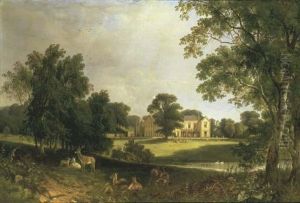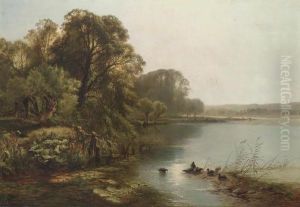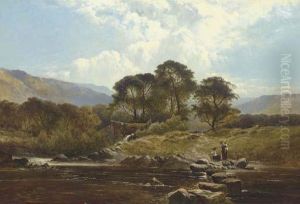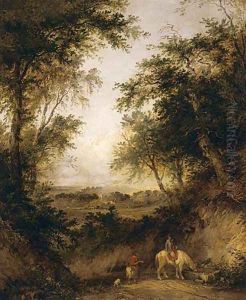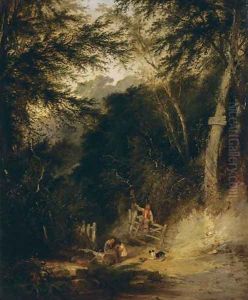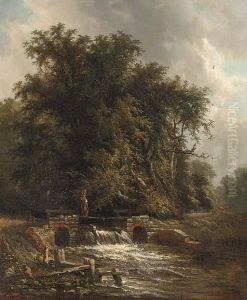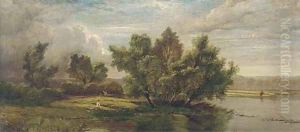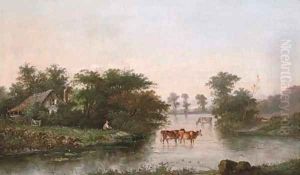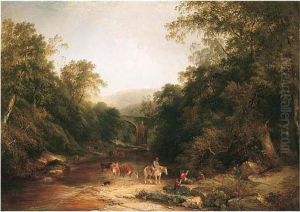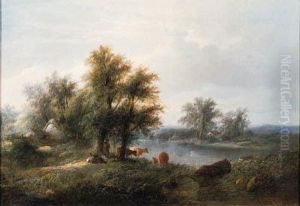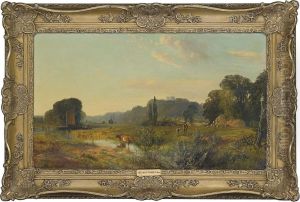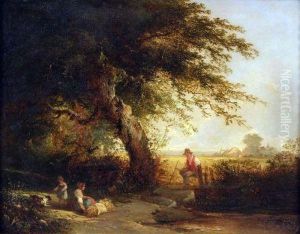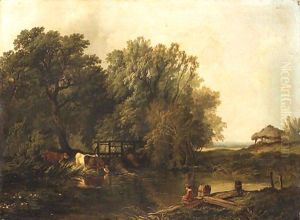Henry John Boddington Paintings
Henry John Boddington was an English landscape painter, known for his idyllic depictions of the English countryside. Born Henry John Williams in London on October 14, 1811, he was the son of notable artist Edward Williams and part of the famous Williams family of painters, often referred to as the Barnes School. His siblings and other relatives were also accomplished artists, making art a significant part of his family's legacy.
Boddington initially pursued a career in the City but abandoned it to follow in his family's artistic footsteps. He changed his surname to Boddington, his mother's maiden name, to distinguish himself from his numerous artistic relatives. Boddington married Clarissa (Clara) Eliza Boddington in 1832 and they had several children, some of whom also became artists.
Boddington's work was characterized by its detailed and picturesque landscapes, often featuring rural settings, rivers, and agricultural scenes. He was particularly skilled in depicting the changing effects of weather and seasons upon the landscape. His paintings often included figures and animals, which he rendered with a lifelike quality that added to the narrative feel of his scenes.
He exhibited extensively during his lifetime, showing work at the Royal Academy, the British Institution, and the Society of British Artists, among other venues. Boddington was a prolific artist, and his paintings were well-received and sought after, both during his life and posthumously.
Despite suffering from rheumatism in his later years, which severely affected his ability to paint, Boddington continued to work until his health no longer allowed it. He passed away on April 11, 1865, in London. Today, Henry John Boddington is remembered as a key figure in 19th-century British landscape painting, and his works are held in numerous art collections across the UK and beyond.













